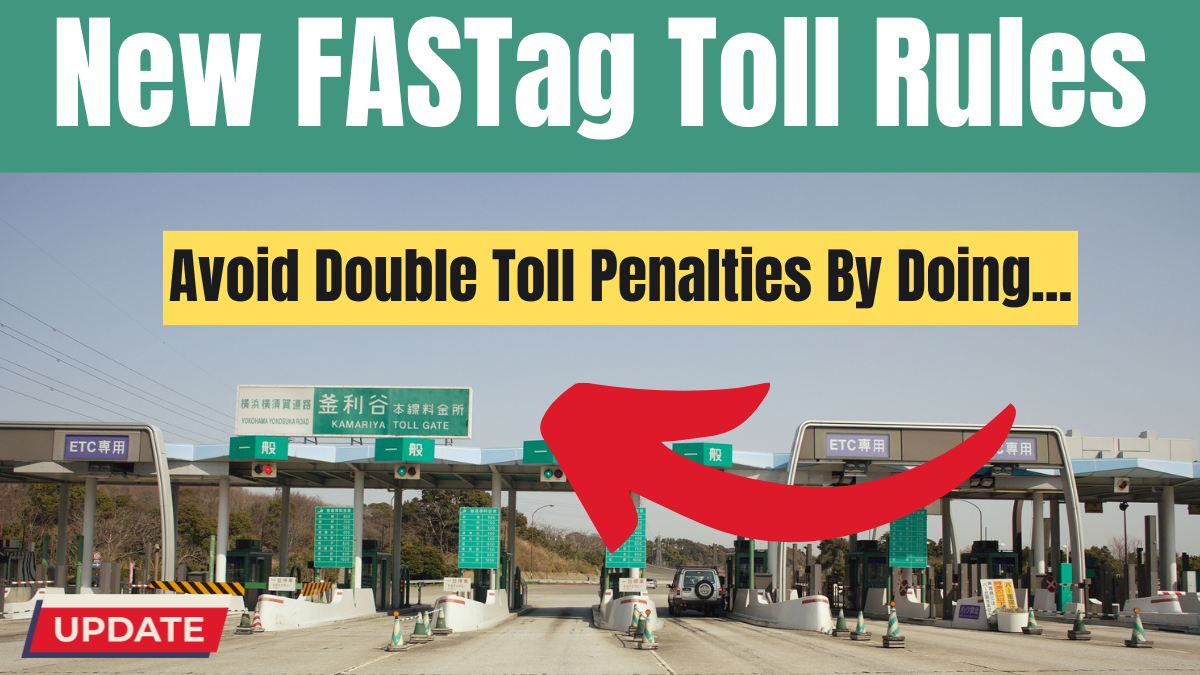Starting February 17, 2025, FASTag users must follow stricter validation rules to avoid penalties at toll plazas. Under the revised National Payments Corporation of India (NPCI) regulations, users will no longer be able to rely on last-minute recharges if their FASTag has been blacklisted for more than 60 minutes before reaching a toll booth.
Failure to maintain an active FASTag account may result in a double toll charge penalty, making timely account management more important than ever.

How Will FASTag Transactions Be Validated?
According to the NPCI circular issued on January 28, 2025, FASTag transactions will be processed based on specific validation timeframes:
-
60 minutes before arriving at the toll booth
- If a FASTag is blacklisted, flagged for low balance, or hotlisted for more than one hour, the transaction will be declined.
-
10 minutes after the FASTag scan
- If the FASTag remains inactive or blacklisted for 10 minutes post-scan, the transaction will also be refused.
If both conditions are met, the system will reject the transaction with error code 176, and the driver will be charged double the toll fee as a penalty.
Why Are FASTag Accounts Getting Blacklisted?
FASTag accounts are categorized into two statuses:
-
Whitelisted (Active) – Can be used for toll payments without issues.
-
Blacklisted (Inactive) – Restricted from transactions due to several reasons, including:
- Insufficient balance
- Incomplete KYC verification
- Errors in vehicle registration details
Under the new rules, if a FASTag has been blacklisted for more than 60 minutes, users will be unable to process a transaction—even if they attempt to recharge at the last minute. However, recharging within 10 minutes after scanning may still allow users to pay the standard toll fee instead of facing penalties.
What Are the Consequences of Ignoring FASTag Account Issues?
Legal experts emphasize that users must proactively manage their FASTag accounts to avoid penalties. The new 70-minute grace period (combining the 60-minute pre-scan window and the 10-minute post-scan window) is designed to streamline toll operations while ensuring that only active accounts can pass through without issues.
However, many users unaware of these new rules may experience unexpected penalties if they fail to:
- Maintain sufficient balance in their FASTag account.
- Update KYC details to prevent blacklisting.
- Check account status before travel to ensure smooth toll transactions.
Experts suggest that these stricter guidelines will improve toll transaction reliability while reducing instances of fraudulent transactions or last-minute account top-ups.
How Can FASTag Users Avoid Penalties?
To prevent blacklisting and avoid double toll penalties, FASTag users should follow these best practices:
1. Maintain a Sufficient Balance
Ensure your FASTag account has enough funds before starting a long trip. Consider activating auto-recharge options to avoid low-balance issues.
2. Keep KYC Information Updated
Incomplete or outdated KYC details may lead to blacklisting, preventing FASTag transactions from being processed. Check your bank portal or FASTag issuer’s website for KYC updates.
3. Check Your FASTag Status Before Reaching a Toll Plaza
Before starting your journey, verify whether your FASTag is:
- Active (whitelisted) – No issues, ready for toll payments.
- Inactive (blacklisted) – Needs immediate resolution before traveling.
4. Recharge on Time
Avoid last-minute top-ups at toll plazas, especially if your FASTag has been blacklisted for more than 60 minutes. If you recharge within 10 minutes after the scan, you might still avoid a penalty.
5. Monitor NPCI Updates and Alerts
Stay informed about new FASTag regulations by regularly checking updates from:
- National Payments Corporation of India (NPCI)
- Your FASTag issuer (banks, digital wallets, etc.)
- Official toll plaza announcements
By staying ahead of these changes, users can ensure uninterrupted toll payments and avoid unnecessary fines.
MUST READ: Why Are People Over 65 Choosing to Work Beyond Retirement? Study Reveals Key Motivations
FAQs
What happens if my FASTag is blacklisted at a toll booth?
If your FASTag has been blacklisted for more than 60 minutes, your transaction will be declined, and you will be charged double the toll fee as a penalty.
Can I recharge my FASTag at the last minute to avoid penalties?
No. If your FASTag has been blacklisted for over an hour, even a last-minute recharge won’t work. However, if you recharge within 10 minutes after scanning, you may still pay the regular toll fee.
How can I check if my FASTag is active before traveling?
You can check your FASTag status through:
- Your bank’s FASTag portal
- The FASTag issuer’s app
- SMS alerts from NPCI
What are the main reasons for FASTag blacklisting?
FASTag accounts can be blacklisted due to:
- Low balance
- Incomplete KYC
- Incorrect vehicle registration details
How much time do I have to fix my FASTag if it gets blacklisted?
The new rules provide a total of 70 minutes (60 minutes before and 10 minutes after the scan) to resolve account issues before incurring penalties.
Will the new FASTag rules improve toll plaza operations?
Yes, the updated regulations aim to reduce congestion, prevent fraud, and improve transaction reliability, making toll payments more efficient.
What should I do if my FASTag transaction fails at a toll booth?
If your FASTag fails, you may:
- Recharge within 10 minutes after scanning to retry the payment.
- Use an alternate FASTag account (if available).
- Pay the toll fee in cash, but expect double charges if your FASTag remains blacklisted.
Are all banks and FASTag issuers following these new rules?
Yes, all FASTag-issuing banks and digital wallets must comply with NPCI’s new FASTag validation guidelines effective February 17, 2025.
Click here to know more.
Aanchal is a passionate writer with a keen interest in storytelling, content creation, and creative expression. She enjoys exploring diverse topics and crafting engaging narratives that captivate readers.
